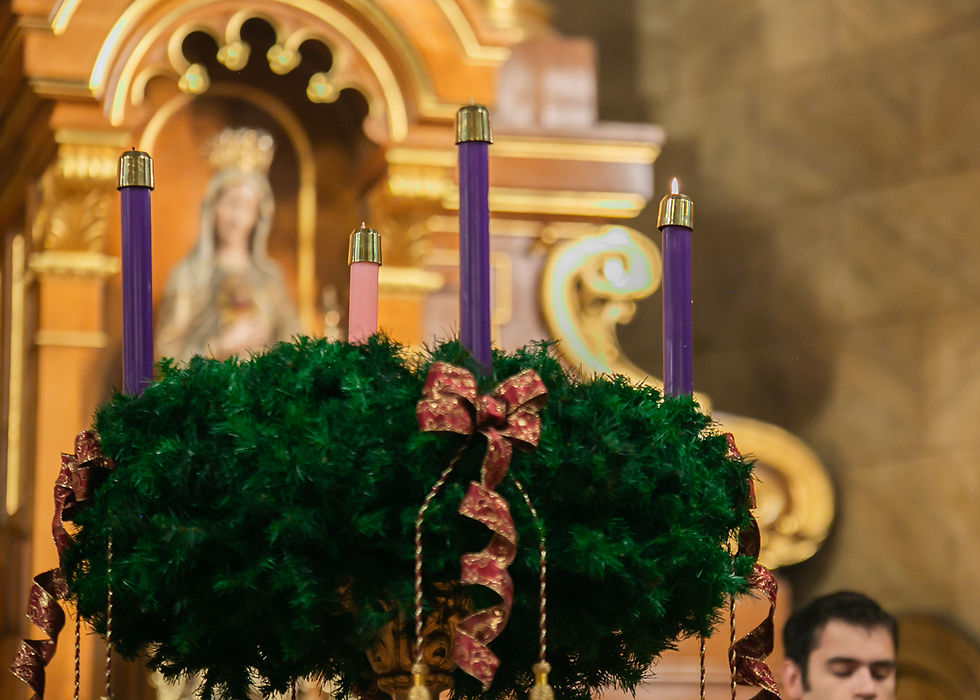St. Augustine, The Canons Regular, and Pope Leo XIV
- St. John Cantius Church

- Aug 27
- 3 min read

Præsul Augustínus, Canon vitæ canónicæ et lucérne pédibus eórum qui Christi sequúntur disciplínam assíduis laúdibus mérito prædicátur.
"The Most Blessed Patron Augustine, Canon of the canonical life and lamp for the feet of those who follow the discipline of Christ, is rightly proclaimed with unceasing praises." —Vespers I Magnificat Antiphon.
The Canons Regular of St. John Cantius are governed by two distinct documents, The Constitutions of St. John Cantius, and The Rule of St. Augustine.
The Rule of St. Augustine was written by St. Augustine of Hippo around 400 AD, right after St. Basil the Great wrote his rule, and before the Rule of St. Benedict written 50 years later. Augustine was the bishop Hippo, which is now modern day Algeria.
St. Augustine in his Holy Rule placed a great value on priests living in community as a path toward holiness. The Canons Regular of St. John Cantius are part of this very large informal "Augustinian family."
Members of the canonical order regard St. Augustine not as their founder, but only as their reformer, or lawgiver. St. Augustine introduced among his own clergy the manner of life which he had seen practiced at Milan, that is of clergy living in common in the manner of the Apostolic Church.
When he became Bishop of Hippo, St. Augustine decided “to have with him in the bishop’s house a monastery of clergy” (Sermon 355, 2). He required of them the complete renunciation of personal property, an exemplary life, humble obedience, and above all charity “that lovely and wholesome bond of souls” (Sermon 350, 3).

The Rule of Saint Augustine and his other works (especially Sermons 355 and 356 on the common life) are a constant source of spiritual renewal for canons regular. The Rule, even though a few of its provisions refer rather to the customs of another age, remains the permanent and unchangeable norm of Canonical Life. And so canons regular should constantly “look into this little book as though into a mirror.”
The common life is one of the principal characteristics of the Order, and it expresses in a special way the mystery of the Church, whose unity it should both reflect and demonstrate. It gives canonical families strength and support to carry out their ministry and so attain perfect charity; and it gives personal fulfillment and security to each member of the community.

This common life was valued so highly by Saint Augustine that he taught his disciples to do everything in common. And so canons regular put their common life to the service of God and his people, especially by working together for the good of the Church in the liturgical and pastoral ministry.
"For this reason you have come to the monastery, one heart and mind on the way to God"—Rule of St. Augustine
It could be loosely said that an extended member of "The Canons Regular of St. John Cantius Family" was elected pope. Pope Leo is an Augustinian friar and was even the Prior General of the world wide Order of Augustian Friars.
We are delighted that our new Holy Father is a son of our mutual spiritual father, St. Augustine. Pope Leo XIV has also chosen a motto which reflects this Augustinian tradition: ‘In Illo uno unum,’ which means ‘In the One, we are one.’

“The phrase is taken from Saint Augustine’s Exposition on Psalm 127, where he explains that ‘although we Christians are many, in the one Christ we are one.’
In 2023 then-Cardinal Robert Francis Prevost spoke about the significance of this motto: ‘As can be seen from my episcopal motto, unity and communion are truly part of the charism of the Order of Saint Augustine, and also of my way of acting and thinking.’
“He then adds, ‘Although we Christians are many, in the one Christ we are one. We are many and we are one because we are united to Him, and if our Head is in heaven, the members will follow.’”







